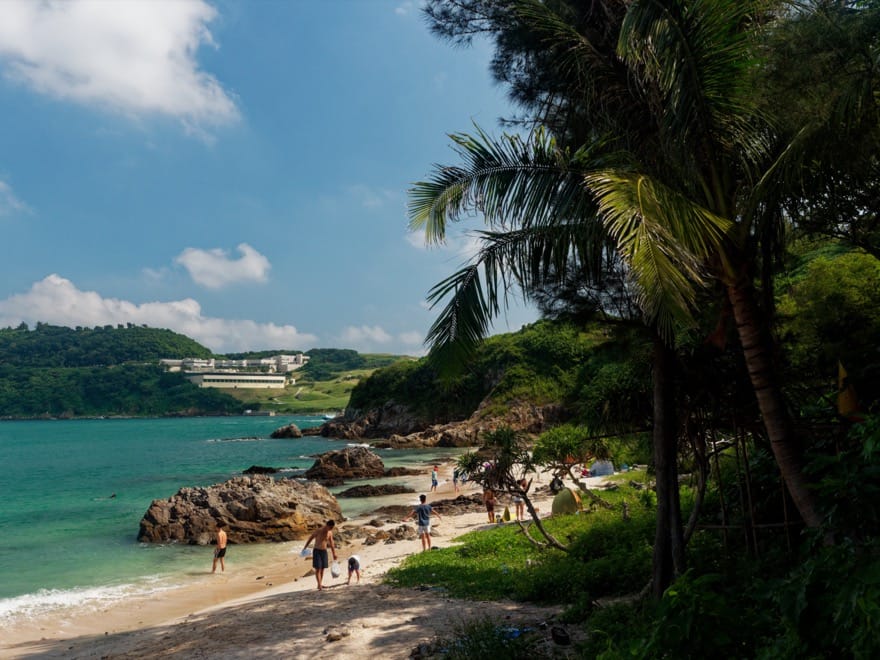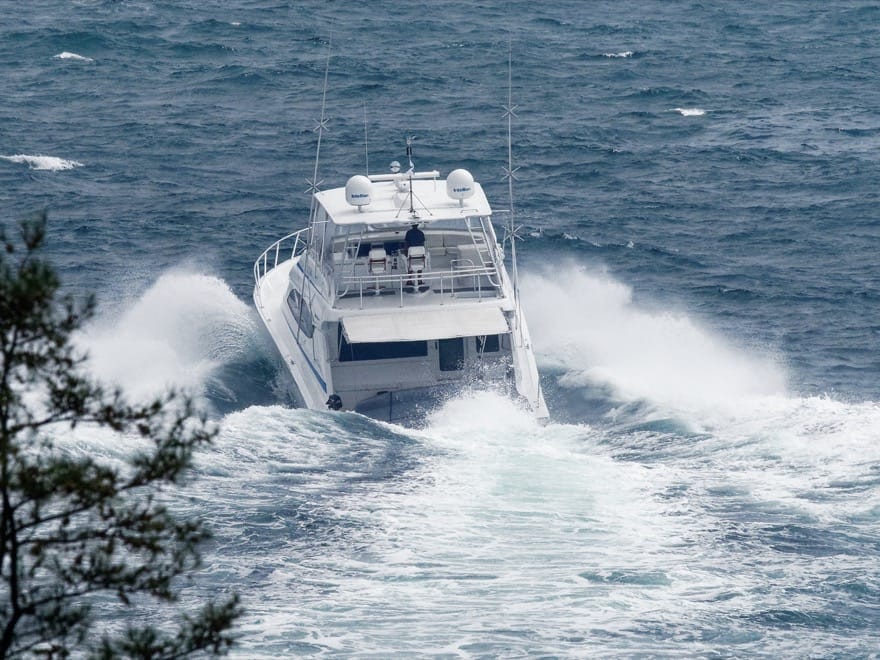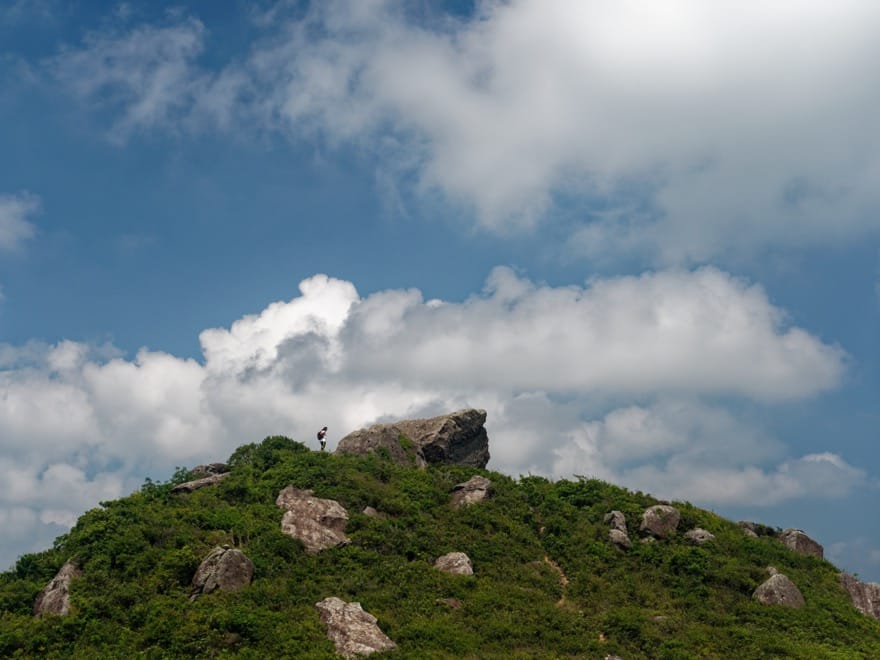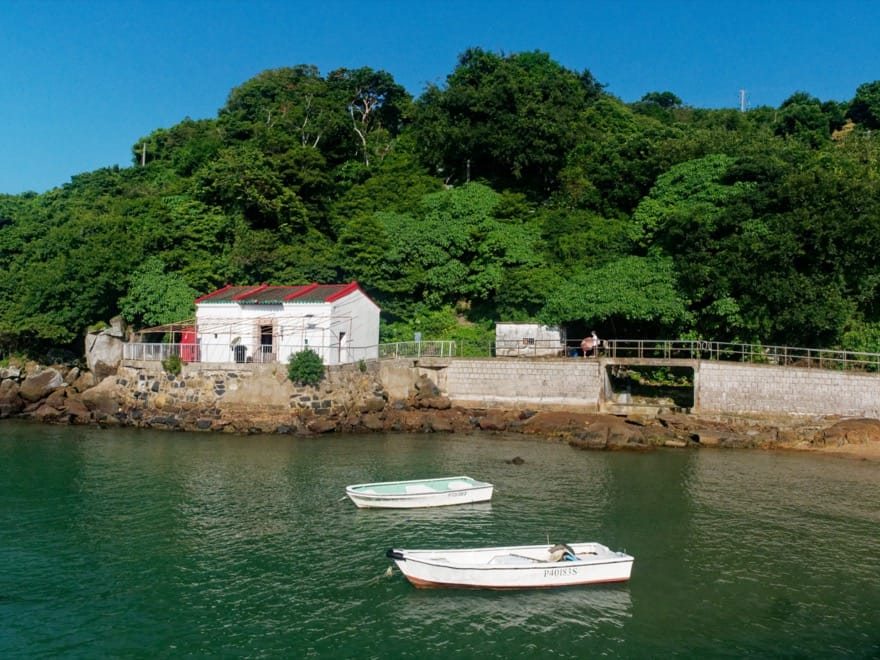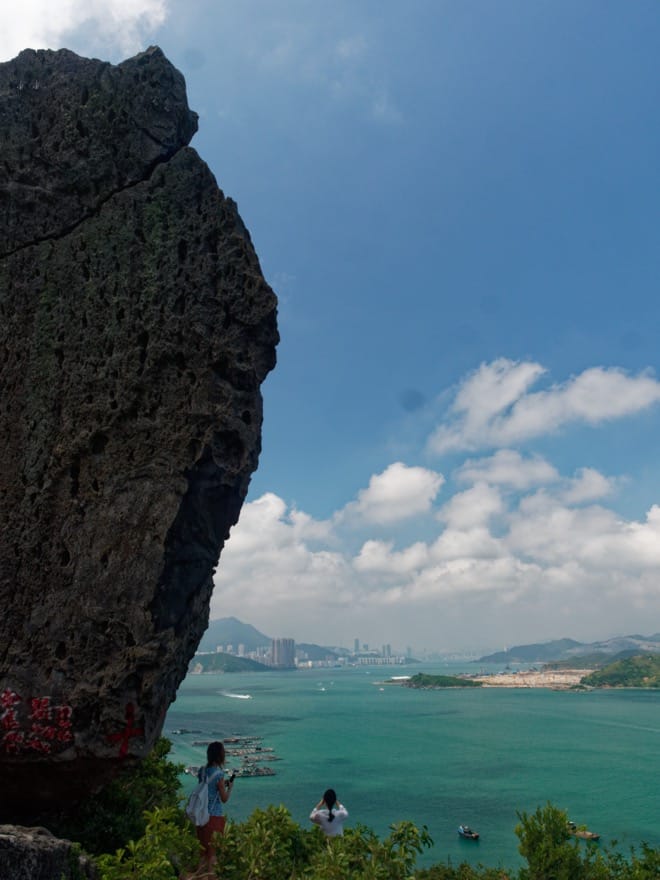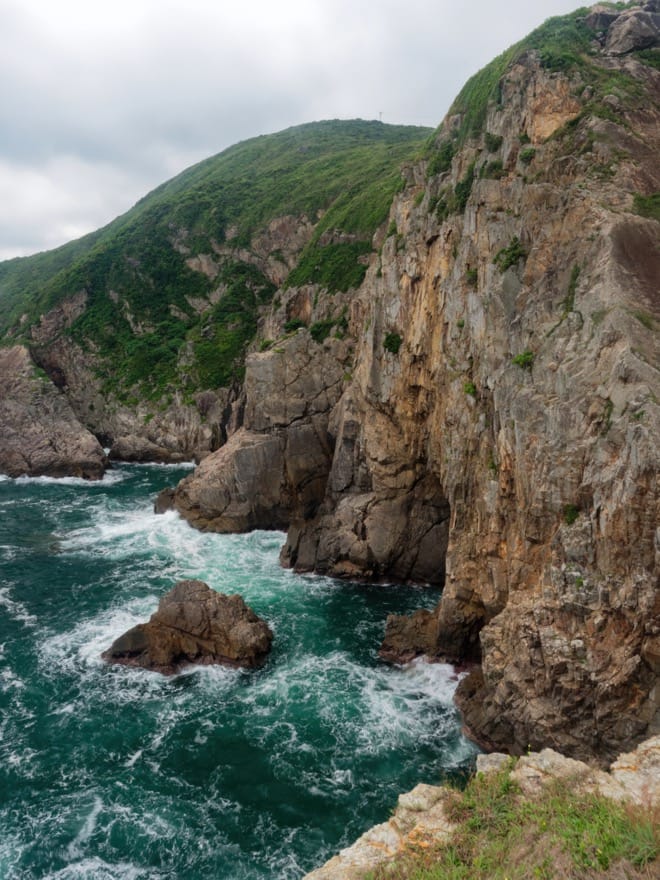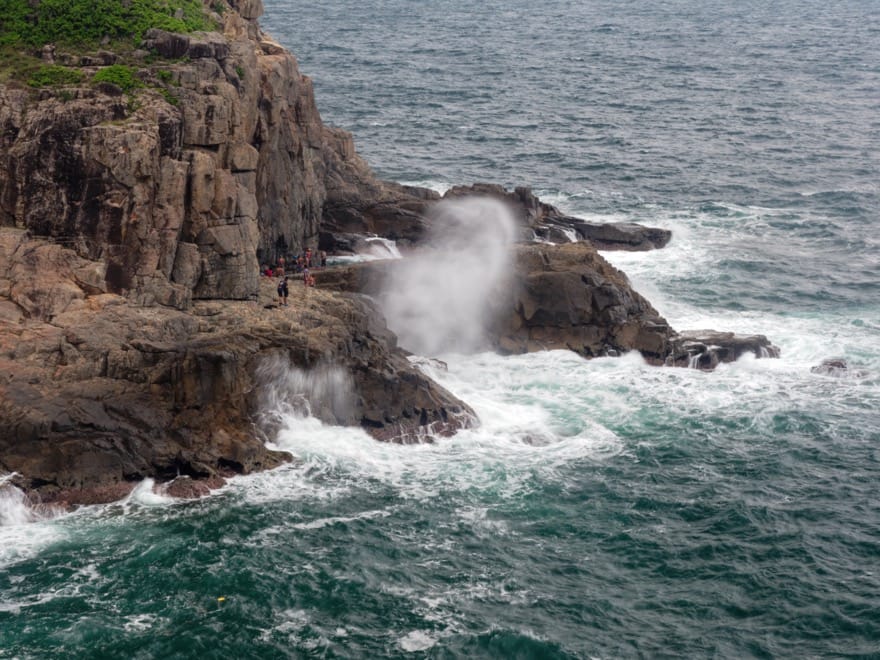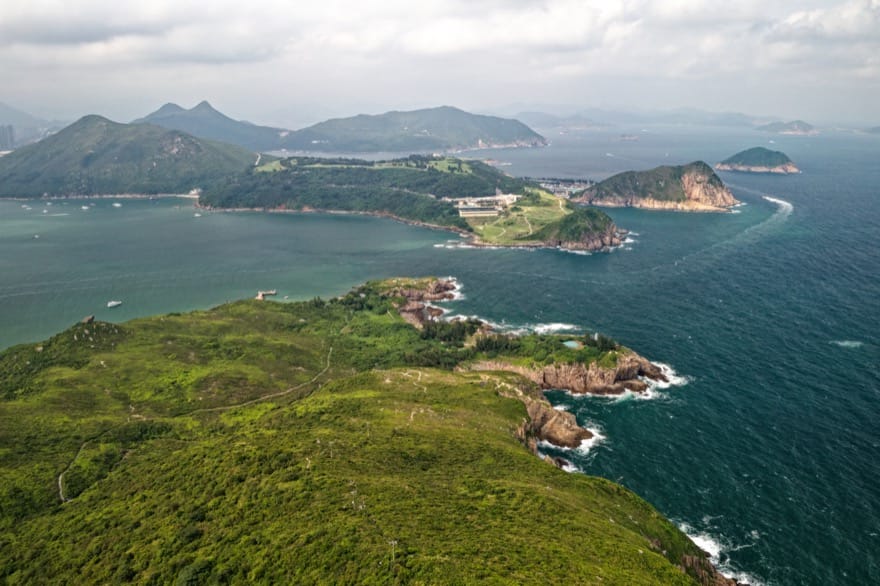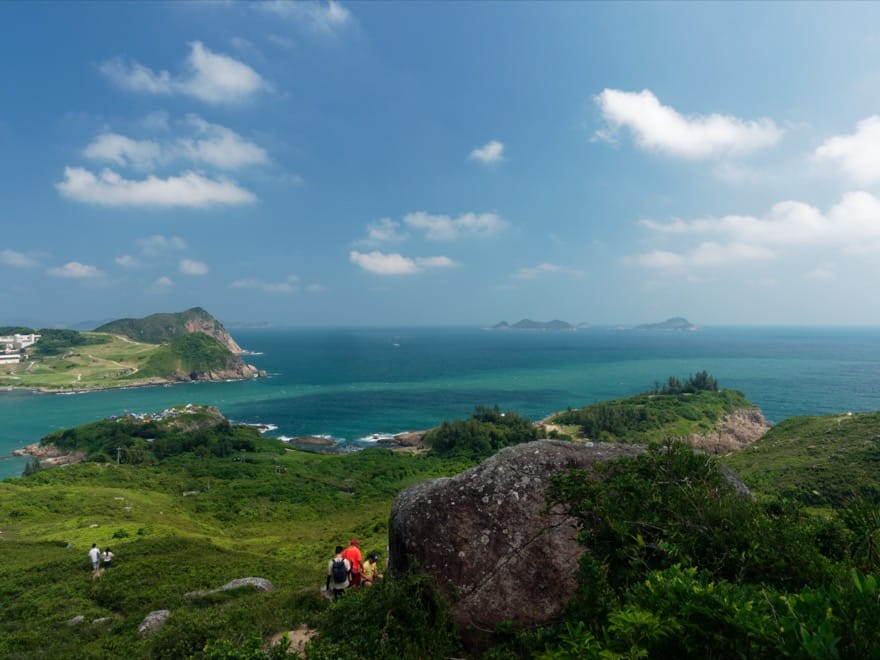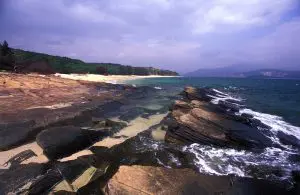While long popular with climbers, Tung Lung Chau has also been discovered by other Hongkongers seeking a brief escape from the city.
Around 155 million years ago, when late Jurassic dinosaurs like sauropods and theropods roamed parts of China, a period of intense volcanic activity began in the area that became Hong Kong. With silicon-rich, viscous magma pushing towards the surface, the volcanoes were explosive, prone to violent eruptions producing lava along with massive pyroclastic flows of incandescent ash, the particles so hot they fused together after settling. On cooling, the fused ash deposits became a rock called tuff.
The volcanic activity lasted around 25 million years, and after the volcanoes fell silent, erosion and weathering removed all vestiges of their original contours, in places exposing the granite that had formed from magma deep within them. By the last Ice Age, the tuff, granite and other rocks formed low mountains, above a coastal plain stretching some 200km to the south.
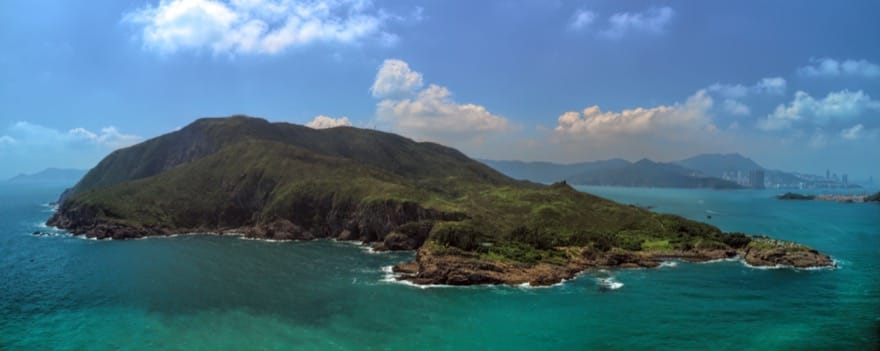
Ten thousand years ago, the Ice Age ended, and as ice sheets melted, the rising sea flooded in across the plain. Reaching the mountains, it turned valleys into inlets, isolated peaks into islands. The sea then began sculpting the coastline, sometimes smashing at the rocks with storm-driven waves, ripping away rock slabs and boulders to form imposing sea cliffs – the tallest of which are on Tung Lung Chau, a small island around 2.5km east of Hong Kong Island.
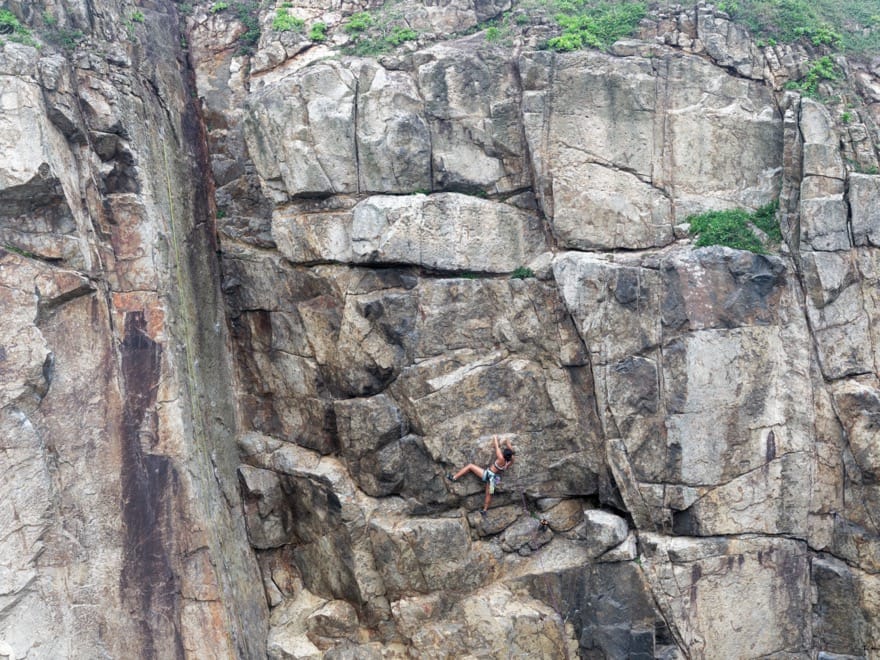
These cliffs make Tung Lung Chau “Hong Kong’s premiere climbing area”, according to the Hong Kong Climbing website. When I first went to the island, back in the early 1990s I think, there was only a tiny ferry – in my memory, a kaito barely bigger than a rowing boat, and the other passengers seemed to be all climbers.
Nowadays, Tung Lung Chau remains popular for climbers, but has also been discovered by other Hongkongers seeking a brief escape from the city. The kaito ferries are bigger now; one departs from a pier decorated with maps and photos showing the island’s attractions.
The ferries head to a pier at Nam Tong, on the west coast of Tung Lung Chau. Though it’s only just outside Victoria Harbour, the approach is akin to arriving at a far-flung rural islet. There’s no sign of the cliffs; instead, woodland covers the slopes above the shore, and the only obvious building is a compact Hung Shing temple, within which is an altar dedicated to the God of Southern sea. There’s a small pier, where the ferry berths. From here, walk up a flight of steps to a concrete path running roughly parallel to the coast. Turn left, and there’s a pleasant walk towards an old fort in the north.
En route, perhaps look out for a rough track on the right, up through low vegetation, to a cluster of giant boulders perched on the oddly named Hen Hill. While you’d need to be a climber to make it to the top of the main boulder, Kite Rock – which looks as high as a house, the base of it is a good place to stop and enjoy views over the windswept north of the island, towards a golf course on the nearby Clear Water Bay Peninsula. Then, onwards, towards the fort.
The main path soon arrives at three cafes in shanty-type buildings. Climbers halt to refuel here, and just below is a small beach where people might sunbathe and swim, by a pier that’s an optional stop as you arrive on at least some ferries.
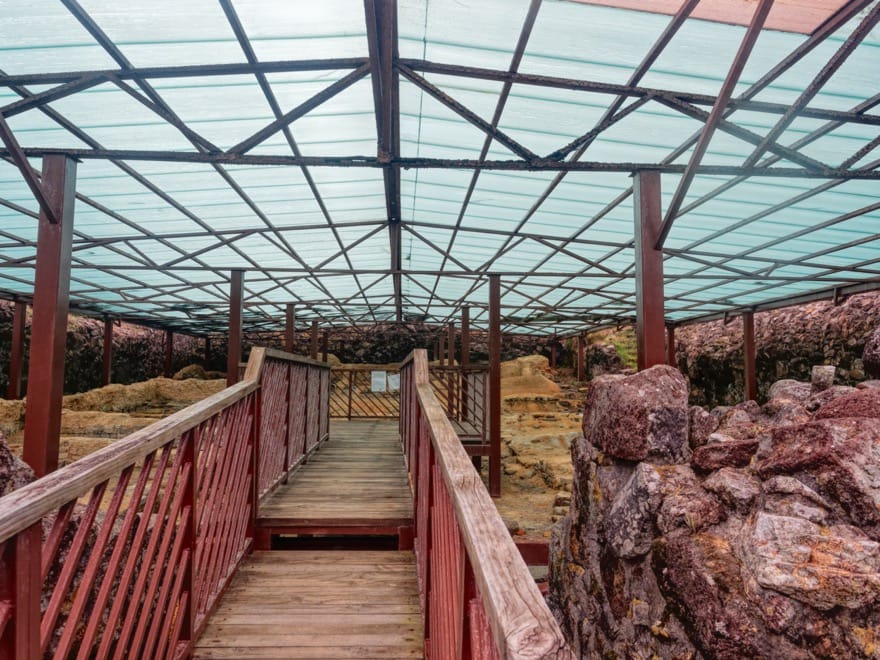
The path turns south, dips to cross a stream flowing to a stony shoreline, then leads gently up to a small headland jutting east into the South China Sea. This is the location of the Tung Lung Fort which, according to the Antiquities and Monuments Office, was built in the early 18th century, to guard the coast against pirates. While there were 15 guardhouses and eight cannons, today little remains but the three-metre thick wall. You can enter along a wooden walkway, and see where archaeologists have been at work in the interior, which is now sheltered from the elements by a translucent plastic roof.
Now, it’s time to admire the renowned Tung Lung Chau cliffs. Retrace your steps from the headland, through a campsite that’s been closed during the Covid pandemic, and take a narrow footpath that climbs the hillside to the south. Angle left, and there’s another, higher headland. From here, you can enjoy grandstand views of climbers ascending a cliff face dubbed Sea Gully – a sheer rock wall above a boulder-strewn gully where climbers gather, watching and maybe proffering advice to others with varying degrees of skill as spider-men and spider-women.
When the northeast monsoon blows, the sea below is rough, and it’s entertaining to watch pleasure boats arriving from calmer western waters, passing through the channel between Tung Lung Chau and the Clear Water Bay Peninsula, and then crashing into the waves, sending spray flying. Some might even turn back, opting to explore eastern waters on a calmer day.
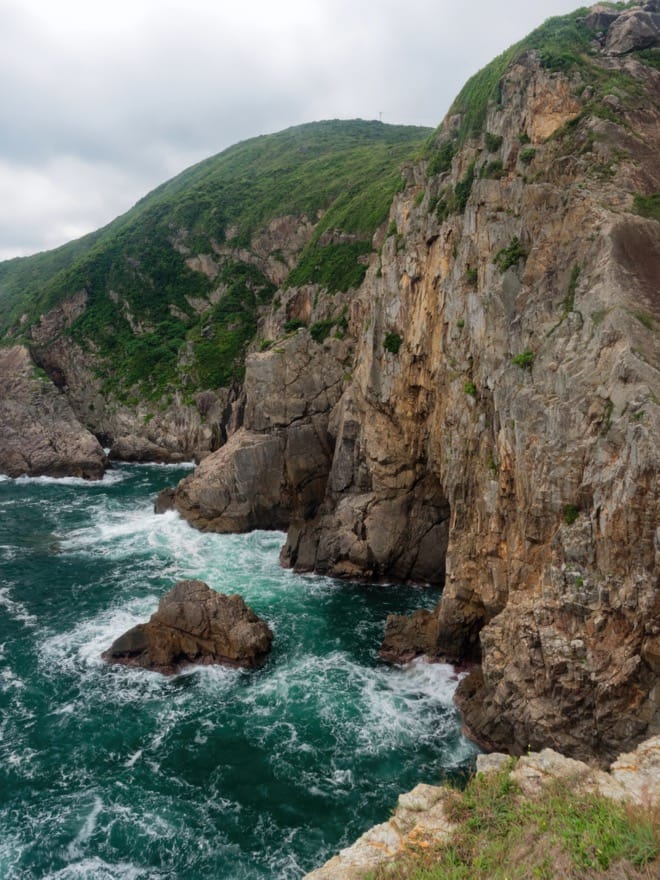
The uphill track makes a far easier way to reach the top of Sea Gully, for more views of the wild, rough-hewn coastline. Then, perhaps continue onwards and upwards, to the highest point on Tung Lung Chau. While this is just 232 metres above the sea, note that there are some steep trail sections, requiring scrambling and perhaps grabbing slender branches to pull yourself up.
Rather than a majestic summit, the climb only takes you to a gently sloping hilltop with a satellite communication station and a helipad. But, thanks to these, there is an easier way down – along a concrete footpath that wends its way towards the southern coast of Tung Lung Chau, with more cliffs in sight, then turns northwards to roughly follow the west coast.
A side trail drops a rock carving, which shows a dragon according to the 1819 Xinan Gazetteer, which described the geography of the historic Bao’an – or Xinan – county that included today’s Hong Kong. Without knowing this, you might be hard pressed to figure it’s anything more than meandering lines chiselled into a flat, vertical rock surface.
Arriving at Nam Tong, the path passes a few scattered houses, just a couple of storeys high. It seems there’s little more than a handful of residents, including the couple who operate a pleasant, secluded cafe featuring a Nemo-like clown fish in the sign.
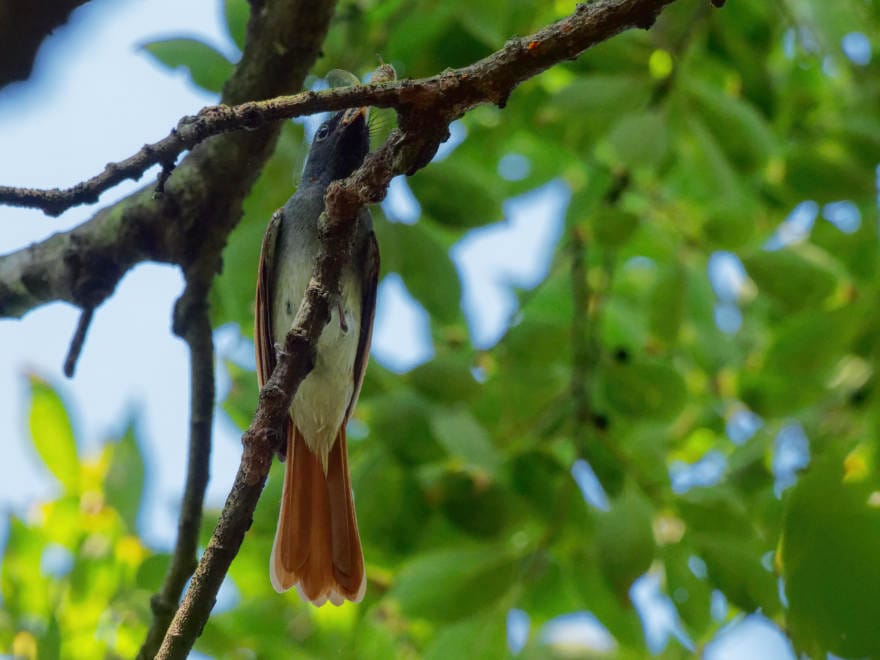
There’s woodland including old orchards along the trail here, where birdwatchers recently discovered migratory songbirds such as flycatchers, warblers and thrushes can occur in fair numbers – presumably as tired birds travelling along the coast are drawn to the island as a resting place, then find their way to the main trees.
Look west, and the high-rises of north Hong Kong Island are prominent; a reminder that soon it’s time to ride the ferry back to the hustle and bustle of city life.
Getting there
Two companies operate ferries to Tung Lung Chau on Saturdays, Sundays and public holidays.
Coral Sea Ferry Services Company operates from Sam Ka Tsuen, near Lei Yu Mun, Kowloon, from a pier that’s also served by a ferry to/from Sai Wan Ho. Timetable
Blue Sea Ferry Company operates from the west shore of the Shau Kei Wan Typhoon Shelter (beside Grand Promenade).
